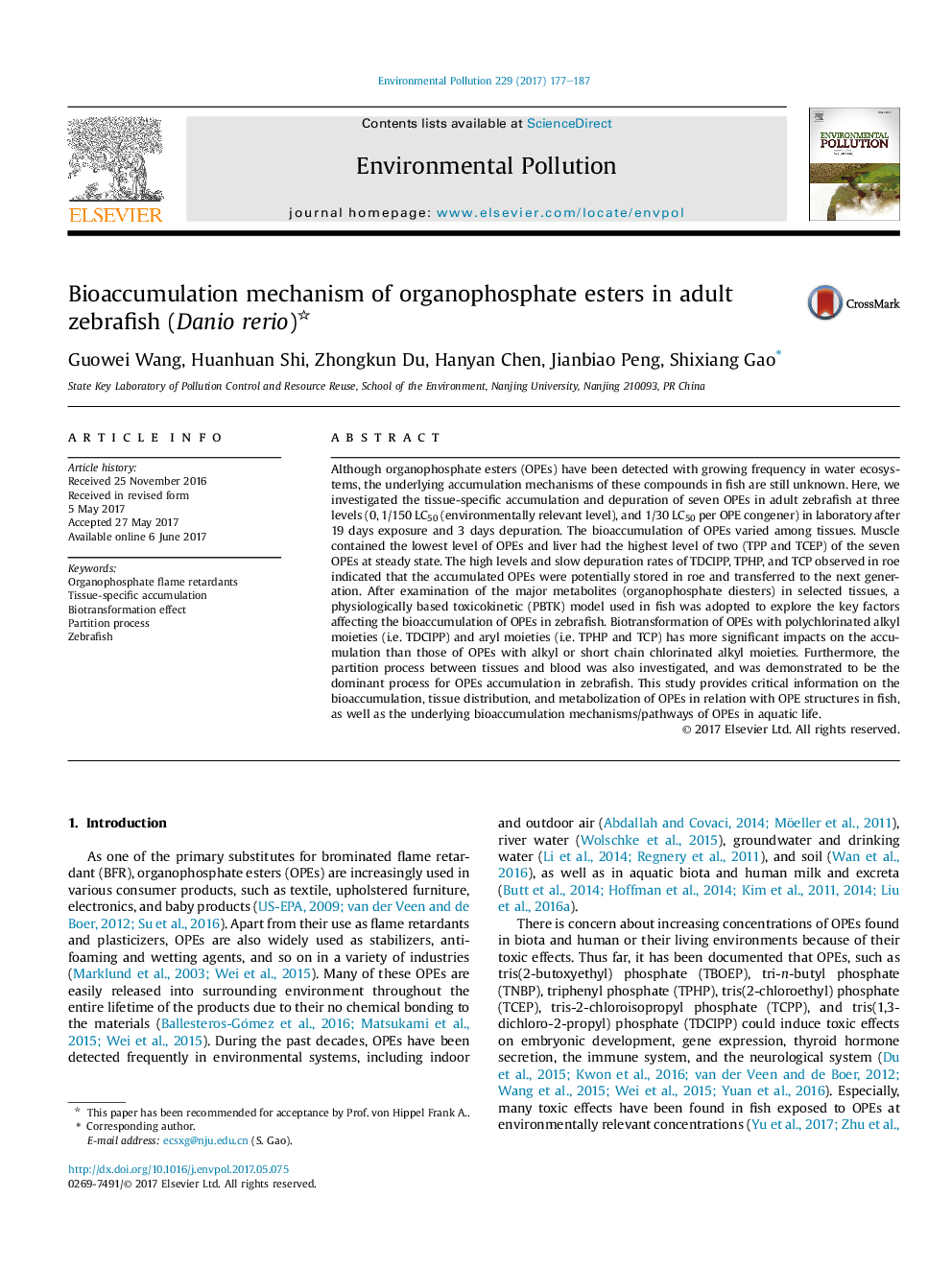| کد مقاله | کد نشریه | سال انتشار | مقاله انگلیسی | نسخه تمام متن |
|---|---|---|---|---|
| 5748765 | 1619144 | 2017 | 11 صفحه PDF | دانلود رایگان |

- Tissue-specific accumulation and depuration of seven OPEs in zebrafish were investigated.
- OPEs accumulated in roe, and could potentially be transferred to the next generation.
- Levels of diester metabolites BDCIPP and DPHP were 1.2 and 2.0 times as those of their parents.
- Partition process dominates the accumulation of OPEs, and biotransformation effect is important.
Although organophosphate esters (OPEs) have been detected with growing frequency in water ecosystems, the underlying accumulation mechanisms of these compounds in fish are still unknown. Here, we investigated the tissue-specific accumulation and depuration of seven OPEs in adult zebrafish at three levels (0, 1/150 LC50 (environmentally relevant level), and 1/30 LC50 per OPE congener) in laboratory after 19 days exposure and 3 days depuration. The bioaccumulation of OPEs varied among tissues. Muscle contained the lowest level of OPEs and liver had the highest level of two (TPP and TCEP) of the seven OPEs at steady state. The high levels and slow depuration rates of TDCIPP, TPHP, and TCP observed in roe indicated that the accumulated OPEs were potentially stored in roe and transferred to the next generation. After examination of the major metabolites (organophosphate diesters) in selected tissues, a physiologically based toxicokinetic (PBTK) model used in fish was adopted to explore the key factors affecting the bioaccumulation of OPEs in zebrafish. Biotransformation of OPEs with polychlorinated alkyl moieties (i.e. TDCIPP) and aryl moieties (i.e. TPHP and TCP) has more significant impacts on the accumulation than those of OPEs with alkyl or short chain chlorinated alkyl moieties. Furthermore, the partition process between tissues and blood was also investigated, and was demonstrated to be the dominant process for OPEs accumulation in zebrafish. This study provides critical information on the bioaccumulation, tissue distribution, and metabolization of OPEs in relation with OPE structures in fish, as well as the underlying bioaccumulation mechanisms/pathways of OPEs in aquatic life.
258
Journal: Environmental Pollution - Volume 229, October 2017, Pages 177-187